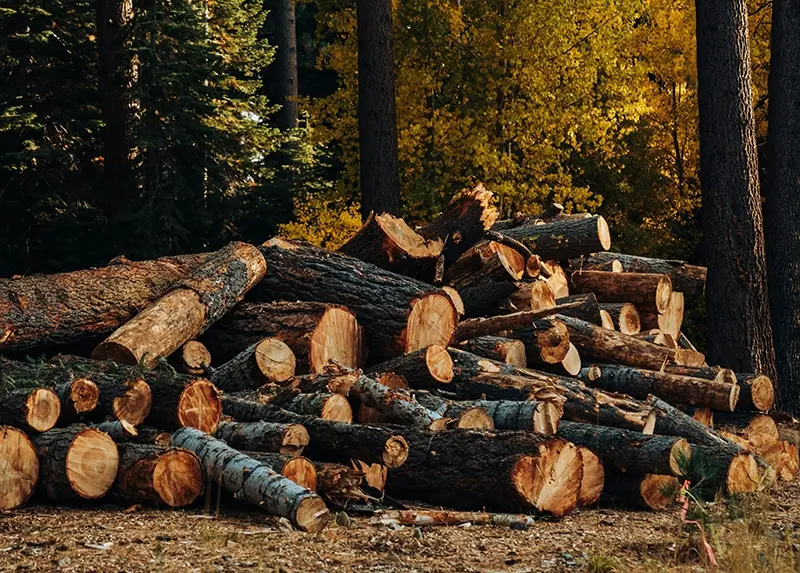At the highest-level, timberland investment encompasses the ownership of forestland and trees on it (sometimes investors just own the land or sometimes just the timber); however, most often the investor will own both.
The growth in the asset class is not surprising given its favorable characteristics – good real returns, low volatility, and best of all, low or negative correlation with most other assets, both financial and real.
Key Takeaways
- Historical returns have averaged 10.9 percent annually over 37 years.
- Timberland returns are derived from a combination of income (yield) and capital gains (appreciation).
- Capital gains arise from the steady biological growth of the trees and from the changes in the value of the timber and the underlying land.
- Biological growth accounts for over 60% of the total return.
- This biological growth leads to timberland having low correlations to other investment classes.
Historical Returns
Historical returns have averaged 10.9 percent annually over 37 years, greater than returns earned by asset classes such as commercial real estate, corporate bonds, and even gold.
Timberland returns are derived from a combination of income (yield) and capital gains (appreciation).
Sources of Income
- The income or distributable cash flow comes mainly from the harvesting and sale of trees.
- Timberland does, however, have other income opportunities, including recreational leases, cell tower leases, wind turbine rental income, and the sale of smaller parcels for higher and better use, such as development sites.
Capital Gains
- Capital gains arise from the steady biological growth of the trees and from changes in the value of the timber and the underlying land.
- Careful, sustainable management of the forest can enhance growth rates and add to investor returns.
Portfolio Diversification Benefits
There is little or no correlation between timberland returns and returns from other financial assets, equities, and corporate bonds. Even the correlation between farmland and gold is negative.
What this means is that timberland can dramatically improve the risk-efficiency of an investor's mixed-asset portfolio, allowing for reduced risk without sacrificing return.
Institutional Interest and Market Dynamics
The attributes of timberland have led to significant institutional interest in the asset class over the past 50 years. Initially, most of the timberland acquired by institutional investors has come from either forest product companies or governmental privatizations.
Market Insights
- Forest product companies came to understand that they did not have to own their own timberland to be able to run their sawmills or pulp and paper mills. Indeed, the sale of timberland can provide capital to improve their manufacturing facilities, to pay down debt, or return equity to shareholders.
- Timberland currently appears to be priced to generate returns in the range of 6 to 7 percent, with yields between 3 to 3.5 percent.
- In addition, there are strong regional differences in returns. For example, there is greater volatility in timber prices in the U.S. Pacific Northwest than in the U.S. South, and return expectations are consistent with these differences in risk.
Managing Environmental Risks
Environmental issues are also at the top of investors’ minds. How should we consider the risks?
- Geographic Diversification: Key in many people’s minds is fire. Surprisingly to most, the actual losses from fire in a well-managed forest are very low. Geographic diversification is a good way to control this and other sources of physical risk (insects, forest diseases, ice storms, and hurricanes).
- Working with the Right Manager: To control these risks, it is important to invest and work alongside a manager focused on long-term sustainable forest management, who works closely with qualified forestry groups so as to conform to best practices.
- Sustainability Certifications: Sustainability certifications are available from third party firms that thoroughly review forest management practices to determine whether the investor’s forests are being managed in a sustainable manner, including the protection of plants, soil, and water quality. Investing in plantation forests carries less environmental risks than investing in natural forests, especially those in environmental “hot spots” such as the Amazon Basin.
- Specialized Due Diligence: One of the biggest risks is the speed at which you can put money to work. Investment opportunities tend to be sporadic. A careful, specialized investor due diligence is required to price these assets and to avoid costly mistakes. Patience will be rewarded by better long-term investment performance. You can also use a land intelligence platform like Acres to evaluate potential productivity and land values.
Final Thoughts
We have made significant progress in how we grow trees, and environmental methods have made investing in timberland a sustainable, ethical, and profitable business – a natural alternative for investors looking to improve their returns on total asset-liability risk.
If you are interested in investing in timberland, also check out this expert interview with Dr. Brooks Mendell of Forisk Consulting, the leader in analyzing timber markets and wood baskets! In this conversations, Dr. Mendell discusses the dynamics of timberland investments and the impact of technology and data on this industry.
